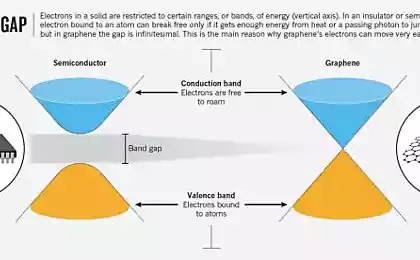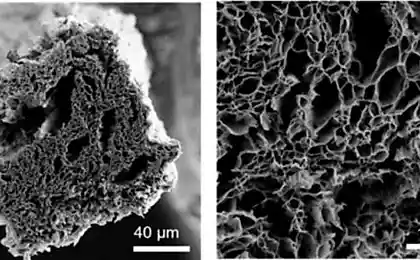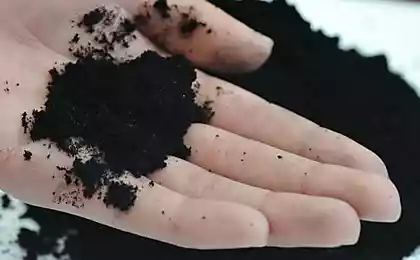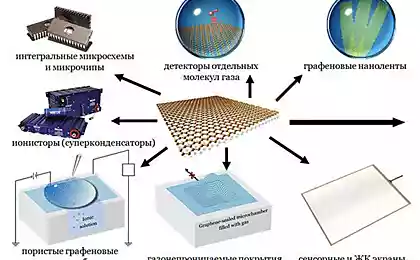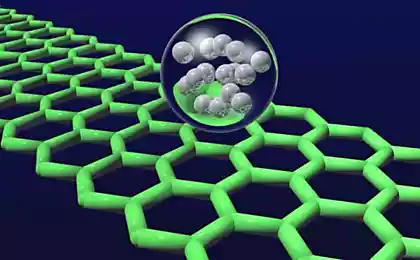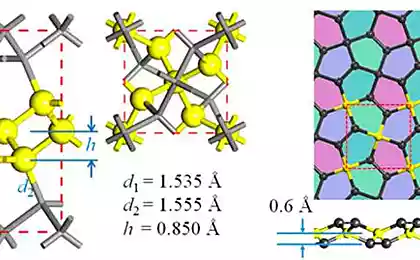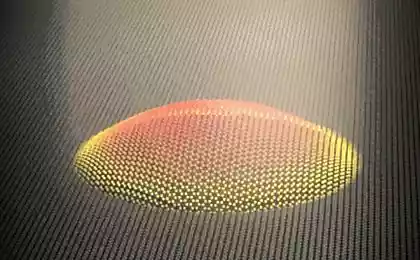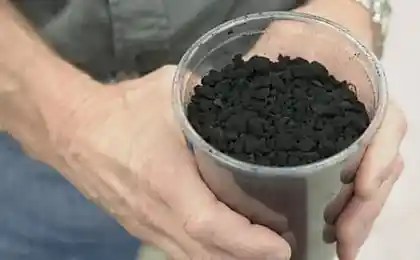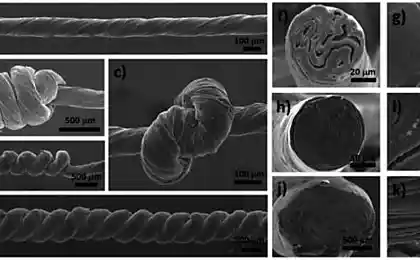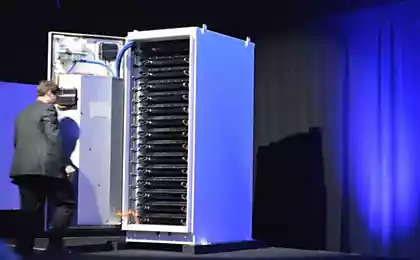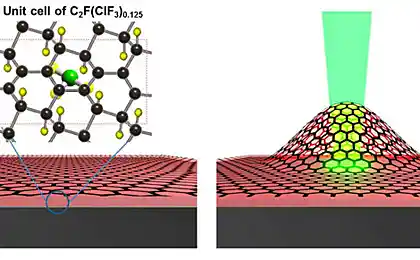583
6 innovative ways to use graphene
Graphene, a superthin material, which is a modification of carbon, is used today by researchers in a variety of areas — from the creation of flexible electronics and to the production of bone implants. The publication of Inhabitat made a selection of six amazing ways to use this promising material.Water desalination
Researchers from the American shipbuilding company Lockheed Martin has discovered that graphene can help to reduce the amount of electricity required for desalination of sea water. The filter material, called Perforene was originally developed to eliminate oil spills, however, the company noticed that he can serve other purposes. Due to the small thickness of graphene, which is only one atom, through the filter can pass water molecules but not salt particles that are too large for this. Ultra-fast batteries recharge
Australian researcher Han Lin from Swinburne University of Technology have printed out a few sheets of graphene on a 3D printer and created on its basis heavy duty battery that be recharged in just a few seconds and the energy which is not depleted over time. It is possible that in the future such batteries based on graphene will be able to fully replace the currently used lithium-ion batteries.
Energy generators rain

Chinese scientists from the Pedagogical University in Kunming and Ocean University of China have developed a solar panel capable of producing electricity even in the rain. The graphene layer placed on the surface of the solar panel that generates energy in the interaction with the salts that are present in rainwater. With an average efficiency solar panels at 6.5%, this method can significantly improve the yield of panels in solar energy.
Energy saving light bulb

At Manchester University, which calls itself the "home of graphene", as it is in this school was created the first sheets of graphene in 2004, a group of researchers has developed a light-based graphene, which uses 10% less energy than traditional. The bulb is coated with graphene on sale in the UK in 2015 at a price comparable to conventional counterparts. The development is the first product using graphene, which was released to the consumer market.
The lightest material on earth
In 2013, Chinese scientists from Zhejiang University have created graphene aerogel of spongy material, one cubic millimeter which weighs in at only 0.16 mg. To date, this is the lightest material in the world, which, moreover, has outstanding flexibility and absorbent properties: scientists say that the aerogel is able to absorb the volume of liquid which is about 900 times its own. In the future, the material can be successfully used in removing oil spills.The paper, which is stronger than steel
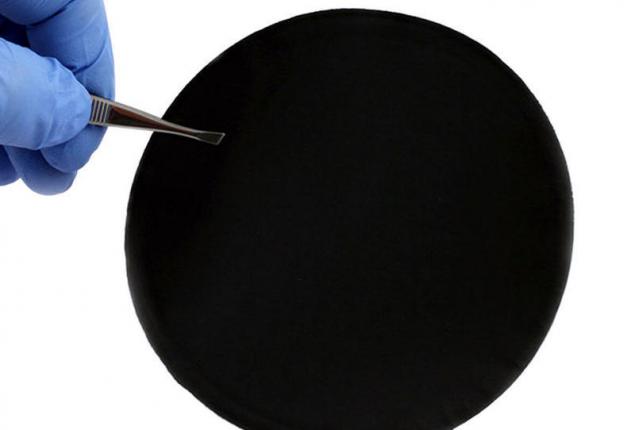
Five years ago, Australian researchers from the University of Sydney has developed a nano-paper based on graphene, which in its strength ten times that of steel. This paper conducts electricity, it is durable and completely eco-friendly and also flexible enough. The material, developed by scientists, could one day become the basis for flexible electronics or lighter, more powerful vehicles — leaving only enough to come up with a cheap way to produce this material. published
Source: hightech.fm/2016/10/31/six-amazing-uses-for-graphene
Researchers from the American shipbuilding company Lockheed Martin has discovered that graphene can help to reduce the amount of electricity required for desalination of sea water. The filter material, called Perforene was originally developed to eliminate oil spills, however, the company noticed that he can serve other purposes. Due to the small thickness of graphene, which is only one atom, through the filter can pass water molecules but not salt particles that are too large for this. Ultra-fast batteries recharge
Australian researcher Han Lin from Swinburne University of Technology have printed out a few sheets of graphene on a 3D printer and created on its basis heavy duty battery that be recharged in just a few seconds and the energy which is not depleted over time. It is possible that in the future such batteries based on graphene will be able to fully replace the currently used lithium-ion batteries.
Energy generators rain

Chinese scientists from the Pedagogical University in Kunming and Ocean University of China have developed a solar panel capable of producing electricity even in the rain. The graphene layer placed on the surface of the solar panel that generates energy in the interaction with the salts that are present in rainwater. With an average efficiency solar panels at 6.5%, this method can significantly improve the yield of panels in solar energy.
Energy saving light bulb

At Manchester University, which calls itself the "home of graphene", as it is in this school was created the first sheets of graphene in 2004, a group of researchers has developed a light-based graphene, which uses 10% less energy than traditional. The bulb is coated with graphene on sale in the UK in 2015 at a price comparable to conventional counterparts. The development is the first product using graphene, which was released to the consumer market.
The lightest material on earth

In 2013, Chinese scientists from Zhejiang University have created graphene aerogel of spongy material, one cubic millimeter which weighs in at only 0.16 mg. To date, this is the lightest material in the world, which, moreover, has outstanding flexibility and absorbent properties: scientists say that the aerogel is able to absorb the volume of liquid which is about 900 times its own. In the future, the material can be successfully used in removing oil spills.The paper, which is stronger than steel

Five years ago, Australian researchers from the University of Sydney has developed a nano-paper based on graphene, which in its strength ten times that of steel. This paper conducts electricity, it is durable and completely eco-friendly and also flexible enough. The material, developed by scientists, could one day become the basis for flexible electronics or lighter, more powerful vehicles — leaving only enough to come up with a cheap way to produce this material. published
Source: hightech.fm/2016/10/31/six-amazing-uses-for-graphene
GM will release more than 30 thousand electric cars Chevrolet Bolt in 2017, a forecast of LG Chem
Sex ruins friendship
